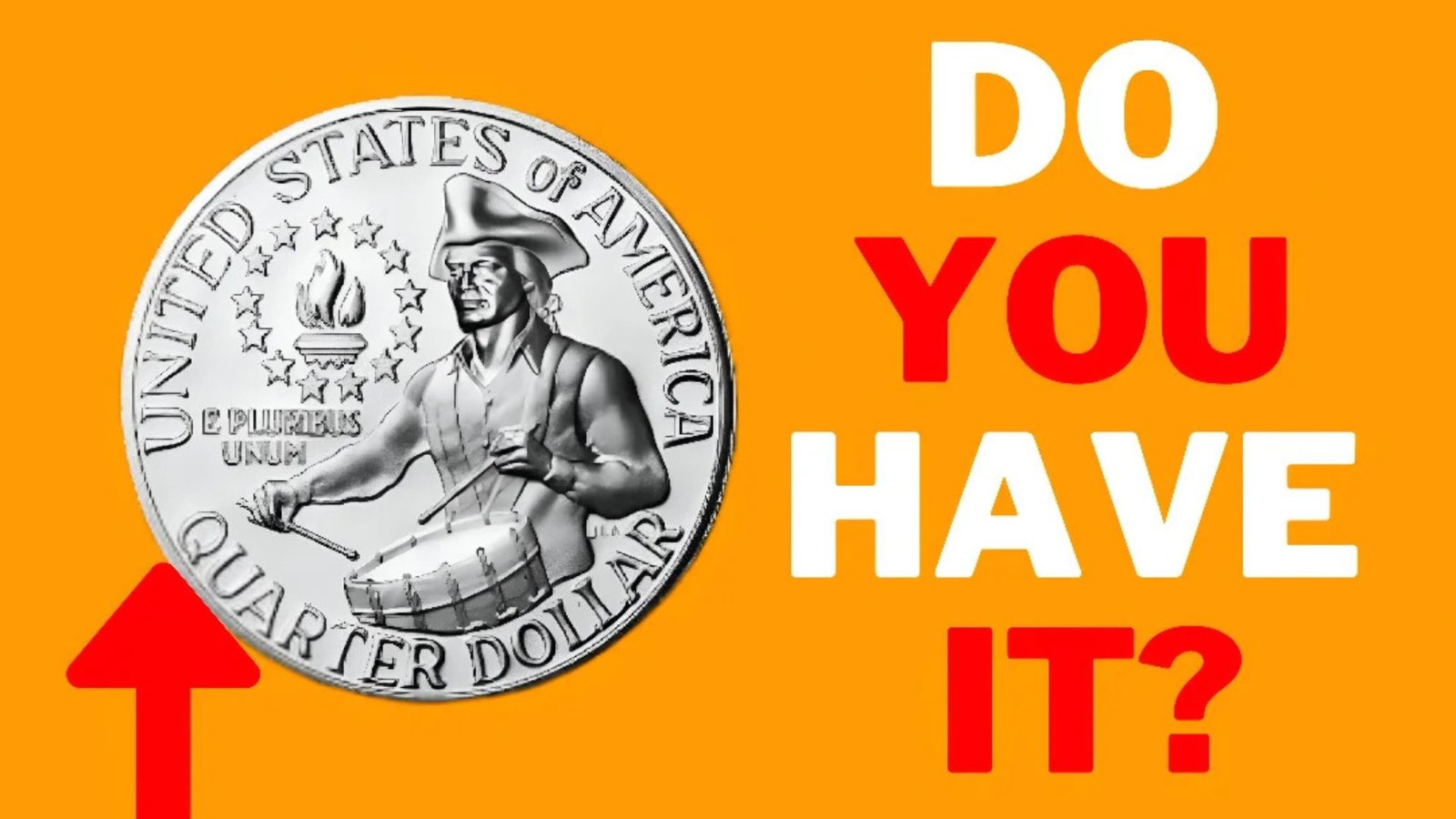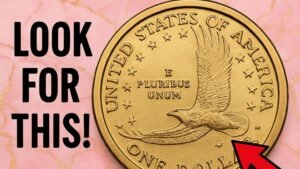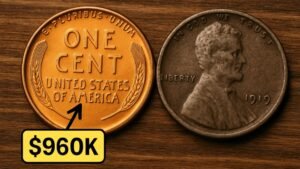The 1976 Bicentennial Quarter is more than just a coin; it’s a symbol of America’s 200th birthday. This special quarter was created to celebrate the United States’ bicentennial, marking 200 years since the Declaration of Independence. While most of these quarters are worth just 25 cents, some rare versions can fetch prices as high as $500,000! In this article, we’ll explore why this coin is so special, what makes certain ones valuable, and how you can spot a potentially rare one in your pocket change.
What Is the 1976 Bicentennial Quarter?
The 1976 Bicentennial Quarter was minted to honor America’s 200th anniversary. Unlike regular quarters, it has a unique design. The front (obverse) features the usual portrait of George Washington, but the back (reverse) shows a colonial drummer, symbolizing the American Revolution. The coin also has dual dates, “1776-1976,” to mark the bicentennial.
This quarter was produced in massive quantities—over 1.6 billion were made—making most of them common. However, certain rare versions, like those with errors or made of special materials, are highly sought after by collectors.
Why Are Some Bicentennial Quarters So Valuable?
While most 1976 quarters are worth their face value, a few stand out due to unique features. Here’s why some are worth a fortune:
1. Silver Composition
Some Bicentennial Quarters were struck in 40% silver for collectors. These were not meant for everyday use and were sold in special sets by the U.S. Mint. Silver quarters are more valuable than the standard copper-nickel ones, especially if they’re in excellent condition.
2. Minting Errors
Errors during the minting process can make a coin rare. For example:
- Double Die Errors: The design appears doubled due to a mistake in the minting process.
- Off-Center Strikes: The design is misaligned, making part of the coin blank.
- Missing Mint Marks: Some coins lack the mint mark (a small letter indicating where the coin was made), which can increase value.
3. High-Grade Condition
Coins in near-perfect condition, graded by professional services like PCGS or NGC, can fetch high prices. A “Proof” or “Mint State” coin with a high grade (e.g., MS-69 or PR-69) is especially valuable.
4. Rare Varieties
Certain varieties, like the 1976-D quarter with specific die markers, are prized by collectors. These are harder to find and require expert knowledge to identify.
How to Identify a Valuable 1976 Bicentennial Quarter
Want to check if you have a rare quarter? Here’s a simple guide:
| Feature | What to Look For |
|---|---|
| Material | Check if it’s silver (heavier, shinier) or copper-nickel (lighter, duller). |
| Mint Mark | Look for a “D” (Denver) or “S” (San Francisco) on the front, near Washington’s head. |
| Condition | Look for coins with no scratches, wear, or discoloration. |
| Errors | Check for double images, misaligned designs, or missing mint marks. |
| Weight | Silver quarters weigh about 5.75 grams; copper-nickel ones weigh 5.67 grams. |
Tips for Checking Your Coin
- Use a Magnifying Glass: A loupe (10x magnification) helps spot tiny errors or details.
- Compare with Known Examples: Look at images of rare quarters online to compare.
- Get It Graded: Professional grading services can confirm if your coin is rare and assign it a value.
Where to Find a 1976 Bicentennial Quarter
You might already have one! These quarters were widely circulated, so check:
- Pocket Change: Look through your spare coins.
- Coin Rolls: Banks sell rolls of quarters that might contain a 1976 coin.
- Coin Shops or Shows: Visit local dealers or coin shows to find collector-grade versions.
- Online Marketplaces: Sites like eBay or Heritage Auctions often list rare quarters, but beware of scams.
How Much Is a 1976 Bicentennial Quarter Worth?
The value depends on the coin’s type and condition:
- Common Copper-Nickel Quarters: Worth 25 cents in circulated condition.
- Silver Quarters: $5–$10 in uncirculated condition, more for high grades.
- Error Coins: Can range from $50 to thousands, depending on the error.
- High-Grade Proofs: Some have sold for $500,000 at auctions due to rarity and condition.
To get an accurate value, have your coin appraised by a professional or check recent auction results.
How to Sell a Valuable Bicentennial Quarter
If you think you have a rare quarter, follow these steps:
- Authenticate It: Have it graded by PCGS or NGC to confirm its condition and authenticity.
- Research Market Value: Check recent sales on auction sites to gauge its worth.
- Choose a Selling Platform:
- Auction Houses: For high-value coins, use reputable firms like Heritage Auctions.
- Coin Dealers: Local or online dealers can offer quick sales.
- Online Marketplaces: eBay or other platforms work, but ensure secure transactions.
- Protect Your Coin: Store it in a protective holder to maintain its condition.
Why Collectors Love the 1976 Bicentennial Quarter
This coin isn’t just about money—it’s a piece of history. The drummer design captures the spirit of the American Revolution, and the dual dates remind us of the nation’s founding. Collectors value it for its story, rarity, and beauty. Even common versions are cherished as keepsakes of America’s 200th birthday.
Conclusion
The 1976 Bicentennial Quarter is a fascinating piece of American history that could be hiding in your change jar. While most are worth just a quarter, rare versions with errors, silver composition, or pristine condition can be worth thousands—or even half a million dollars! By learning what to look for, you can spot a valuable coin and maybe even cash in. Start checking your coins today, and who knows—you might discover a treasure!
FAQs About the 1976 Bicentennial Quarter
1. What makes a 1976 Bicentennial Quarter valuable?
Certain quarters are valuable due to silver composition, minting errors (like double dies), high-grade condition, or rare varieties.
2. How can I tell if my quarter is silver?
Silver quarters are slightly heavier (5.75 grams) and shinier than copper-nickel ones (5.67 grams). A coin dealer can confirm.
3. Where can I find a 1976 Bicentennial Quarter?
Check pocket change, coin rolls from banks, coin shops, or online marketplaces like eBay.
4. How do I know if my quarter has an error?
Look for double images, off-center designs, or missing mint marks using a magnifying glass. Professional grading can help.
5. Can I sell my quarter without grading it?
Yes, but grading by PCGS or NGC increases its value and credibility, especially for rare coins.
6. Are all 1976 quarters worth a lot?
No, most are worth 25 cents. Only silver, error, or high-grade coins are valuable.




